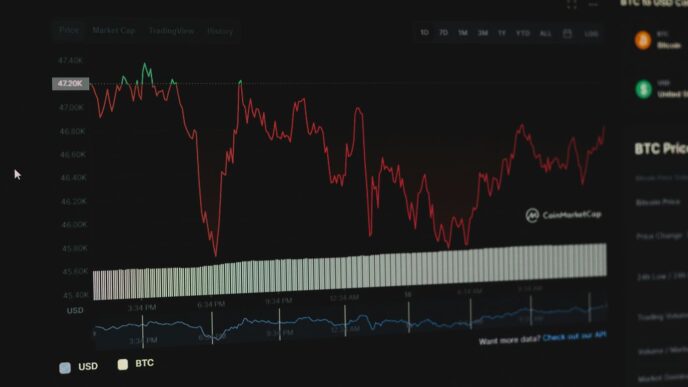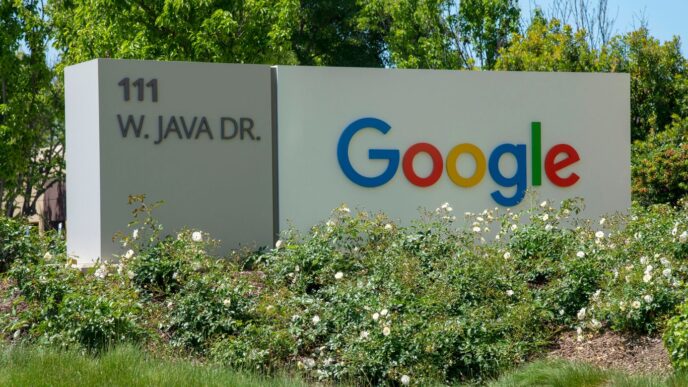OpenAI Secures Significant Funding Round
Wow, OpenAI just pulled in a massive $8.3 billion. That’s a whole lot of cash, and it came in during a funding round that was apparently way more popular than they expected – they call that "oversubscribed." It really shows that a lot of big players in the investment world see something huge happening with AI, and specifically with what OpenAI is doing.
New Capital Infusion Totals $8.3 Billion
This isn’t just pocket change. The $8.3 billion is a serious injection of funds that will likely fuel a lot of their ambitious projects. It’s a clear signal that despite the high costs associated with AI development, investors are willing to bet big on OpenAI’s future.
Dragoneer Investment Group Leads Key Contributions
When the dust settled, Dragoneer Investment Group was a major player, putting in $2.8 billion. They’re known for focusing on tech companies, so their involvement really highlights the confidence they have in OpenAI’s trajectory. Lots of other big names were in on it too, like Founders Fund, Sequoia Capital, and Andreessen Horowitz, which just adds to the feeling that this was a really sought-after investment.
Oversubscribed Round Signals Strong Investor Confidence
An "oversubscribed" round means more investors wanted in than there was money to go around. This usually happens when a company is seen as a really hot prospect. For OpenAI, it suggests that the market is not only interested but actively eager to back their vision, even with the massive costs involved in pushing the boundaries of AI.
Valuation Soars Amidst Growing Demand
New Capital Infusion Totals $8.3 Billion
OpenAI’s latest funding round has officially closed, bringing in a massive $8.3 billion. This isn’t just a small boost; it’s a significant injection of capital that really underscores the company’s current standing and future plans. It’s a lot of money, and it shows that investors are really betting big on what OpenAI is building.
Dragoneer Investment Group Leads Key Contributions
While many investors participated, Dragoneer Investment Group was a major player in this round. Their involvement signals a strong belief in OpenAI’s trajectory. It’s not uncommon for big investment firms to take the lead in these kinds of large funding rounds, and it often means they’ve done their homework and see serious potential.
Oversubscribed Round Signals Strong Investor Confidence
What’s really interesting is that this $8.3 billion round was actually oversubscribed. That means more investors wanted in than there was space for, which is a pretty clear sign that there’s a ton of confidence in OpenAI right now. It’s like a popular concert where all the tickets sold out way before the show even started. This kind of demand usually happens when a company is seen as a leader in a hot market, and let’s be honest, AI is definitely that right now.
Financial Performance and Future Outlook
So, OpenAI’s numbers are pretty wild right now. They’ve managed to pull in $12 billion in what they call Annual Recurring Revenue. That’s a huge jump, and it shows people are really using their stuff, like ChatGPT and their API.
But here’s the thing, and it’s a big one: they’re also losing a ton of money. We’re talking projected losses that are pretty substantial. It seems like they’re spending a massive amount to build out all the infrastructure needed for what they call Artificial General Intelligence, or AGI. It’s like they’re building a rocket ship, and it costs a fortune to get it ready for launch.
Annual Recurring Revenue Surges to $12 Billion
This $12 billion figure is a big deal. It’s not just a one-off sale; it’s money coming in consistently, month after month, year after year. This revenue is mostly from businesses and developers paying to use OpenAI’s advanced AI models and services. Think of companies integrating AI into their own products or using ChatGPT for customer service – that’s where a lot of this money comes from.
Projected Losses and Aggressive Revenue Targets
Even with that massive revenue, the losses are projected to be significant. OpenAI is pouring billions into research and development, plus the sheer cost of running these massive AI models. They’re aiming for even higher revenue targets down the line, which makes sense if they want to eventually turn a profit. It’s a classic high-growth tech company strategy: spend big now to capture a huge market later.
Scaling Infrastructure for Artificial General Intelligence
The big, long-term goal is AGI – basically, AI that can do pretty much any intellectual task a human can. Building the systems to even get close to that requires an unbelievable amount of computing power and specialized hardware. They’re talking about building massive data centers, which are incredibly expensive to set up and run. This is where a huge chunk of their spending is going, and it’s why the losses are so high right now. It’s a bet on the future, a really, really expensive bet.
Strategic Partnerships and Competitive Landscape

Complex Negotiations with Microsoft
OpenAI’s relationship with Microsoft is, well, complicated. It’s not just a simple customer-vendor thing. Microsoft has poured billions into OpenAI, and in return, gets pretty deep access to their cutting-edge AI models. Think of it like Microsoft getting a front-row seat, and sometimes a backstage pass, to the AI revolution. This partnership is key for Microsoft’s own products, like its cloud services and Office suite, making them smarter and more competitive. But for OpenAI, it means they’re heavily reliant on Microsoft’s Azure infrastructure. While this gives them the computing power they need, it also means they’re not entirely free agents. There have been reports of some pretty intense talks about how much control OpenAI really has, especially as their own ambitions grow. It’s a balancing act, for sure.
Competition from Anthropic and Other AI Rivals
Let’s be real, OpenAI isn’t the only player in this game anymore. Companies like Anthropic, which has also pulled in some serious cash, are nipping at their heels. Anthropic is pushing its own AI models, often with a focus on safety and ethics, which is a smart angle. Then you’ve got a whole host of other startups and even big tech companies building their own AI capabilities. It feels like every week there’s a new announcement about some AI breakthrough from somewhere. This means OpenAI has to keep innovating at a breakneck pace just to stay ahead. They can’t afford to rest on their laurels, not with so many smart people working on similar problems.
Diversifying Infrastructure Beyond Microsoft
Because of that reliance on Microsoft, there’s a big push within OpenAI to not put all their eggs in one basket. They’re actively looking at ways to spread out their computing needs. This could mean striking deals with other cloud providers or even exploring building out some of their own hardware solutions down the line. It’s a massive undertaking, considering the sheer amount of computing power AI models like GPT-5 require. But for long-term independence and to avoid being beholden to any single partner, it’s a necessary step. They need flexibility, and that means having options when it comes to where and how they run their AI.
Product Development and Innovation
Upcoming Release of GPT-5
OpenAI is gearing up for the next big leap with GPT-5, and the buzz is real. This isn’t just about making the AI smarter; it’s about making it more useful. Think of GPT-5 less like a fancy autocomplete and more like a personal assistant that can actually get things done. Reports suggest it’s designed to be a workflow engine, capable of picking the right tools for a job, executing tasks, and even checking its own work. This could mean a big drop in how long things take and how much energy is used. Some early users are even saying it can spin up entire applications on its own – it just does stuff. This shift from just providing information to actively executing tasks is a major change.
Focus on Unified AI Systems
Beyond just the next model, OpenAI is pushing towards creating more unified AI systems. The idea is to build AI that can handle a wider range of tasks more smoothly, integrating different capabilities rather than having separate tools for everything. This means AI that can reason, code, and interact with the world in a more connected way. It’s about making AI feel less like a collection of separate programs and more like a single, intelligent entity that understands context and can adapt. This approach aims to make AI more practical for complex, real-world problems.
Challenges in Product Execution and Rollout
Of course, bringing these advanced AI systems to the public isn’t without its hurdles. The complexity of developing and deploying something as powerful as GPT-5 means there are bound to be challenges. Getting the balance right between capability and safety is a constant effort. There’s also the practical side of things: making sure the infrastructure can handle the demand, managing user expectations, and figuring out how to roll out new features without causing major disruptions. It’s a balancing act between pushing the boundaries of what’s possible and making sure the technology is reliable and accessible for everyone who wants to use it.
Investment Implications and Market Dynamics
Balancing Opportunity and Risk for Investors
So, OpenAI just snagged a massive $8.3 billion. That’s a huge number, and it definitely gets people talking. On one hand, it shows a ton of confidence from investors, especially with the company’s sky-high valuation. It feels like a big bet on the future of AI, and who knows, maybe even AGI. But let’s be real, this kind of funding round also comes with some serious questions for anyone thinking about putting their money in.
It’s not just about OpenAI, either. The whole AI sector is seeing a lot of money flow in, and that can make it tough to figure out what’s a solid investment and what’s just hype. We’re seeing valuations climb really fast, and sometimes it feels like we’re back in the dot-com days, where companies were worth a fortune before they even had a clear way to make money. It’s a bit of a wild west out there right now.
Here’s a quick look at how things are shaping up:
- High Valuations: Companies like OpenAI are getting valued at hundreds of billions. This means investors are paying a premium, hoping for even bigger returns down the line.
- Profitability Questions: While revenue is growing, so are the costs. It’s still unclear when exactly these AI giants will actually turn a consistent profit.
- Market Volatility: The AI space is moving at lightning speed. What looks like a sure thing today could be old news tomorrow, making it a risky place for investors.
Inflated Valuation Multiples in the AI Sector
Let’s talk about those valuations. OpenAI’s $300 billion valuation is pretty mind-boggling. When you compare that to how much money they’re actually making right now, the numbers just don’t seem to add up in the traditional sense. It’s like everyone’s betting on what AI could do, rather than what it is doing today. This kind of thinking has led to some really high valuation multiples across the board in AI.
Think about it: a lot of these companies are still in the early stages of figuring out their business models. They’re spending a ton on research, development, and infrastructure. So, when you see a company valued at hundreds of billions, you have to wonder if that price tag is sustainable. It’s a delicate balance between recognizing the potential of groundbreaking technology and getting caught up in a speculative bubble.
The Road to Profitability for AI Companies
This is the million-dollar question, isn’t it? How do these AI companies, especially the ones building foundational models, actually make money? OpenAI’s annual recurring revenue is impressive at $12 billion, but they’re also projecting significant losses. That tells you something about the sheer cost of building and scaling these advanced AI systems.
It’s a different game than, say, a software company that can scale with relatively low overhead. AI requires massive computing power, constant research, and a huge amount of talent. So, the path to profitability is going to be a long and expensive one. Investors need to be prepared for that. It’s not just about having a great product; it’s about building a sustainable business around it. We’re seeing a shift where investors are starting to care more about profitability timelines, which is a good sign for the long-term health of the sector. But for now, it’s still a big gamble.
Looking Ahead
So, OpenAI just snagged another $8.3 billion, and the company’s worth a whopping $300 billion now. It’s clear a lot of people are betting big on AI, maybe even more than during the dot-com craze. They’re pushing out new tech like GPT-5 and talking about AGI, which sounds pretty wild. But, they’re also burning through cash like crazy and facing tough competition. It’s going to be interesting to see if they can actually make all this money work in the long run, or if this is just another tech bubble waiting to pop. Only time will tell, I guess.














